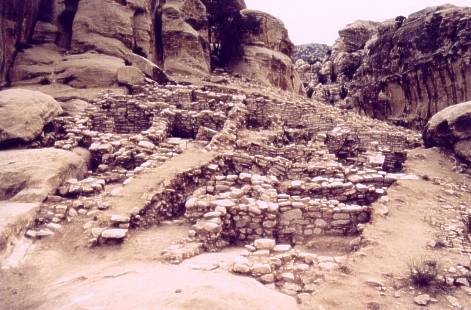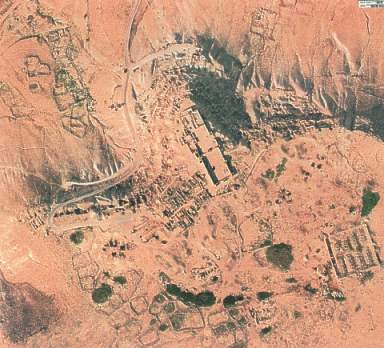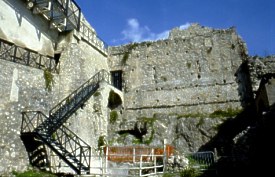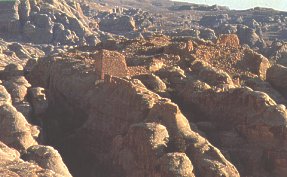VIRTUAL REALITY FOR ARCHAEOLOGISTS: THE ARTHUR PROJECT
Since the first pioneering applications, in a few years 3D models and VR (Virtual Reality) reconstructions have gained a considerable space among the most frequently used tools in the explanation of the archaeological discoveries. The continuous increase in the processing power of desktop PC and, maybe, the amazing features of videogames, with the level of image quality and the freedom of player control to which the user is nowadays accustomed, have paved the way for a widespread acceptance among the public of this technology, which has so far an indisputable credit as a tool to disseminate the knowledge and to raise public awareness of Cultural Heritage. Nonetheless, it has not yet exploited its full potential as a scientific tool. As it is happening in many other fields like engineering and medicine, VR may be invaluable in archaeology to manipulate objects and structures that cannot be examined directly, since they do no more exist. To do this according to a scientific methodology, VR technology must possess features that presently are unavailable or have received little attention, possibly because they have less importance in a dissemination perspective. So, for scientific communication it should be possible to distinguish, in a reconstructed model, what is still existing, what is reasonably reconstructed and what is only guessed, and the model should be "annotated", that is linked to relevant information concerning its parts, thus enabling a critique approach to the underlying philosophy. From another point of view, to use VR during the synthesis stage, easiness of use and availability of advanced options are paramount, so that the archaeologist in a next future may put 3D computer models on his (virtual) desktop, beside drawings, photos and databases, which have already gained a substantial place in archaeological research.
This is not only a technological problem: no computer tool may be mechanically transferred and blindly used in archaeology, so archaeologists must play a primary role in the definition of desired features and functions.
Starting from these ideas, in late Spring 1999 two research teams laid down a first draft of a project: one was formed by researchers from the University of Florence, Italy, who had a proven experience in computer applications to archaeology, the other belonged to the Virtual Reality Centre of Teesside University, UK, a highly specialized centre for VR. The draft was circulated among archaeological teams from different countries and specializations, and with their contribution it became the ARTHUR project: to develop a VR system to be used in archaeology for scientific research and communication. In a word, we want to try to turn a gadget into a tool.
To achieve this result, we shall start from a wide set of archaeological case studies, ranging from Prehistory to Modern Age, placed in different regions that go from the Atlantic Ocean to the Near East and from the Negev desert to the Polar Circle. By this we should recognise a common core for the system, to be accompanied by specialized modules to address problem-specific needs.
To quote just a summary of some of the case studies, several concern Prehistory investigations, as Grotta del Cavallo, a site in Southern Italy spanning over 100 000 years' history, from the Neanderthal man to the Palaeolithic, or the Neolithic sites of Basta and Ba'ja in Jordan (fig. 1), with their exceptional preservation of wall structures (partly 2-storied with walls up to 4 m high) that makes them unique samples for the period of the terraced architecture, or Pestenacker and Unfriedhausen in Germany, dating since 4th millennium BC and remarkable for the preservation of wood structures that could allow easy reconstruction of buildings.

Fig. 1: Neolithic site of of Ba'ja, Jordan
Classical period cases include the Greek colony of Cuma in Southern Italy, in particular for the relationships between the terrain and the topography of the ancient town, evaluating alternate reconstruction hypothesis; the Nabatean - Roman - Byzantine town of Avdat, in Southern Israel (fig. 2), which includes an acropolis with palaces, temples and public institutions, from various periods, a roman fort (very well preserved), a lower town and, in the vicinity of the site, several farms with a typical run-off farming economy; the Celt sanctuary of Gastiburu in Bizcaya, Spain, a complex structure pertaining to the little known tribe of "Caristii".

Fig. 2: Satellite view of Avdat, Israel
At a different scale and from different periods, other cases range from the Roman - Early Christian site of Mariana, in Corsica, with the nearby site of Valle di Rostina, to the Longobard Palace of Arechi (Salerno, Italy) (fig. 3), with the remarkable comparisons between the archaeological discoveries and the historical descriptions, to the medieval hamlet of Rocca Ricciarda in Central Italy and to the Crusader Castle of Wu'Ayra (fig. 4) and the fortification system in the Petra valley in Jordan.
 Fig. 3: Palace of Arechi II, Italy |
 Fig. 4: Crusader Castle of Wu'Ayra, Jordan |
The Viking village of Hofstadir in Iceland and the 14th century boat of Guernica, Spain, finally add to the list of participating partners.
At present we are contacting some prestige research institutions and well-known experts to share this investigation with them, or, if they prefer, to act as advisors and referees. However, inscriptions are still open, since the project has moved only the first steps. Eligible sites must fulfil some conditions (manageable size, availability of data, experience on the site of the archaeological team), but anybody interested may submit a proposal to the responsible (archimed@ats.it) or simply ask to be informed of the development of the project, whose success considerably depends on the interest of the scientific community since its early stages.
The photos of Ba'ja, Avdat, Arechi II palace and Wu'Ayra are, respectively, courtesy of Dr. Hans Georg Gebel, Berlin, Dr. Peter Fabian, Beer-Sheva, Prof. Paolo Peduto, Salerno and Prof. Guido Vannini, Florence.
Home page of the project: coming soon
© Franco Niccolucci
e-mail: archimed@ats.it
This article will be quoted by F. Niccolucci, Virtual Reality for Archaeologists: the ARTHUR Project (http://farch.net).






